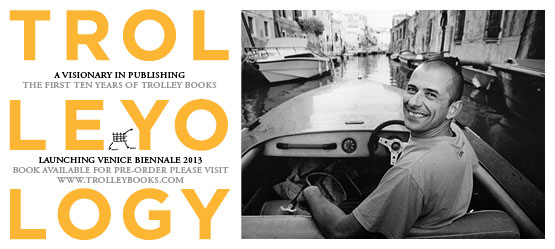It seems a paradox, but natural non fur does exist. Moreover it is no new invention but an open industry secret for over a hundred years.
In my search to find the perfect natural material to dress the recently discovered Wonder World Fur creatures, the first lead I came across was the naturally clad range of Steiff toys.
It turns out, Margarete Steiff had been on exactly the same mission at the turn of the 20th century: to find the best material to dress her miniature animals which were to gain world fame with the ‘Theodore Roosevelt - Teddy’. Her lucky day was when she found Reinhard Schulte in Duisburg who had set up his factory weaving alpaca and mohair in 1901. Having supplied Margarete Steiff with natural non fur ever since, Reinhard Schulte in turn became ‘Steiff Schulte’ in 2009.
When Margarete Steiff sent her feelers out, her troubles were different than mine in in 2012. In 1902, there were no man made fibers yet. Today, try googling any type of fur, your search will take you down all sorts of routes before the road to Duisburg.
In 1900 there were only natural materials. In fact, in 1918/19, the dire post WWI years when no alpaca or mohair was to come by, Reinhard Schulte ingeniously resorted to weaving wood pulp, paper, to cover the naked bears.
Today, we are inundated with so-called alternatives which subsequently appeared: cellulose viscose yarn was developed in 1913 by the Dreyfus brothers in Basel (but only marketed post WWI). Wallace Carothers, who had started his research into chemical structures of polymers in 1924 as professor at Harvard, developed neoprene for Dupont in 1931, nylon in 1935, polyester in 1941, acrylic followed in 1944.
These are the very fibres that our ‘normal’ fake furs are made of:polyester, acrylics – polymers made from petroleum-based chemical substances.
While we may know of the cancer risks involved with plastic and PET bottles (made of polyester, PET was developed in the early ‘50s), our plush kids toy or fake fox hat seem harmless. However, a fake fur coat is as ecologically sound as a thousand plastic bags crunched together. The material is poisonous every step of the way and not bio-degradable. Hence, no real alternative at all.
Visiting Steiff Schulte in their original factory, conveniently right in the center of town, is an eye opener. This company has continued to produce their top of the market fur fabrics under this very roof for over a century, weathering wars and globalism.
The natural materials are woven, dyed, washed, brushed, by hand or machine, ironed, cropped (levelled), napped, dried, batted, dressed... treated and finished in a million and one way, in a never-ending colour palette: some 2500 tones are on the current colour card. One could eat the fabric rather than wear it.
”Our products are verified by Margarete Steiff to be certified Code EN 71, the quality requirement for toys in Europe. This includes the ecologial standard which is a lot stricter for toys than for garment manufacture.” For good reason: ”... if a child chews on his teddy’s ear, we need to make sure it’s safe,” explains Bernhard Wanning, one of the three directors of Steiff Schulte. However, high fashion has discovered the natural gem too.“
“A very exciting moment was when in 2007 Prada used our materials very prominently in their winter collection.“ I look around the sample room. Names on boxes such as Jacobs and McCartney are easy give aways. So, it shouldn’t have been so hard for me to trace Steiff Schulte afterall. But who likes to give away their secrets? We do.
Wonder World Fur has been created for a number of reasons: to raise awareness as well as funds for WWF to save more animals, their future and habitat – and to give away the secret: it is absolutely possible to make beautiful elegant clothes and accessories, ethically, sustainably, in Europe, today. They won’t be as cheap as a high street throwaway, but that’s the next point. It shouldn’t be. Save up for it, treasure it, wear it, keep it.
Secrets behind the Wonder World Fur collection:
— Natural non fur by Steiff Schulte, 100 % mohair pile, cotton backing. Hair shorn off the back of Angora goats in South Africa gets spun into silk-like yarn with great insulating qualities which make it warm in winter and cool in the summer. Durable, naturally elastic and flame resistant it does not felt like wool does. Arriving on cones, in a flurry of processes the mohair is transformed into an amazing variety of natural non furs.
— Peace silk. Did you know that 3000 silkworms get boiled alive for every pound of conventional silk? That’s because the little creatures make their cocoon out of one beautiful long thread of silk, but when they’ve done their work, rested on it, and want to emerge as moths,… they’ll bite their way through to the sun. And that is what we don’t want, lots of short threads. We would like one nice long thread we can unravel. So the cocoon gets tossed in boiling water, and each worm sacrificed.
There is only one type of silk, ‘peace silk,’ (or ‘Ahimsa silk’) where the hardworking creatures get to live on to breed more worms which in turn make more cocoons in the next cycle. This is either because it’s the shorter yarns once chumped through that are being spun in the ‘peace process’, or because they are from a special species called ‘Eri’.
These particular silkworms had the clever idea of creating an open cocoon which does not need biting through. Possibly, for lack of natural enemies. Eri silk is indigenous to India where the wild organic cocoons are often collected from the forests along with tussar and muga silk. Furthermore, peace silk is processed with less chemicals and fairer deals for the workers. Let live, ask for peace silk. Lucy Tammam will source it for you, as she did for us.
- — Linen from Belgium. The beautiful silver-gold Deltracon linen we found through CELC, Masters of Linen, who have a fantastic linen and hemp library right on rue de Louvre in Paris. Hemp once was so important that in the 1600s US farmers were forced to farm it. The original Levi Strauss jeans were made from it, the July 4 declaration of independence was written on hemp paper. It is the yarn that ship ropes used to be made of, it is resistant to mildew and hemp grows without pesticides or herbicides. It only went out of fashion through the political efforts of the American cotton lobby who in 1937 had hemp banned for decades to protect their industry.
Linen is made from flax, a local European plant, and is one of the oldest fabrics in history. In Swiss lake dwellings fragments were found from 8000 BC, some fibres have been dated prehistoric: 36000 BC. When Pharao Ramses II died in 1213 BC he wore linen in his tomb. In fact mummies were wrapped in linen as symbol of light, purity and wealth.
Valued for its cool touch, linen is often used close to the skin, the word ‘lining’ and ‘lingerie’ derive from ‘linum’ (Latin) and ‘linon’ (Greek). Linen is durable, even more so wet than dry, the US dollar note has 25% of linen in it for its crisp strength. Deltracon is part of the club ‘Masters of Linen’, which certifies 100% traceability in Europe, as well as being certified Oeko Tex. The same goes for Jos Vanneste, who custom twisted their wetspun linen yarns for us.
— Recycled polyester. The trademarked name ‘newlife’ refers to the fact that this yarn gives a new life to locally collected PET bottles that otherwise clog up the planet, float on the seas. We ordered our recycled polyester labels from Mion in Padova, another supplier is Borello & Co in Milan. It costs more, but our planet is worth every penny. Labels aside, there are stunning recycled polyester fabrics, as I saw at C L A S S in London. C L A S S - Creativity, Lifestyle And Sustainable Synergy - is a comprehensive eco sustainable fashion library founded by Giusi Bettoni with showrooms in Milan, London, Helsinki and Madrid.
— Riri has their entire zips range eco certified, and if you are ever stuck for fashion supplies in Paris, check out Socolatex in the Marais.
— Metalbottoni in Bergamo specialize in luxury finishings developed an ecologically responsible ‘No Impact’ technology’ range. Here the metals are treated without synthetic chemical products, using only water based colours, work cycles with low energy usage and
environmental impact. Materials completing the range include Corozo, the palm nut traded as ‘vegetable ivory’ and FSC certified wood.
— Modemanufaktur Heilmann is an artisanal atelier in Bamberg,
Germany specializing in high quality garments and accessories in natural non furs, custom patterns, special orders and small runs, full service and quick turn around. Just what you need!
— The hangtags are printed by Bastian Druck in Trier using mineral oil-free printing inks based on vegetable oil on Ecolabel certified FSC paper from Fedrigoni.
Here comes Wonder World Fur for WWF!
Available to order online at wonderworldfur.com
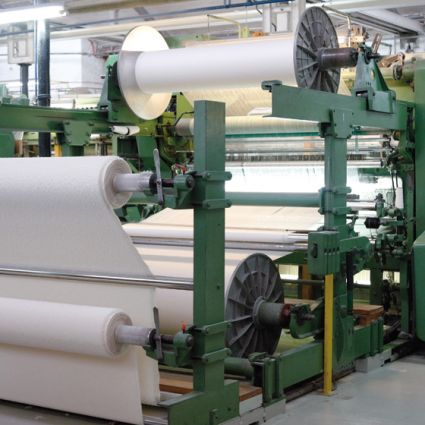
 Paul Steiff (left) and Reinhard Schulte (right) in 1908 - photo copyright Steiff Schulte
">
Paul Steiff (left) and Reinhard Schulte (right) in 1908 - photo copyright Steiff Schulte
">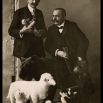 Angora goat with its fleece of mohair - Mohair yarn is shorn off the back of Angora goats in order to be spun into Mohair yarn. Photo: photo: Jan Hoehe
">
Angora goat with its fleece of mohair - Mohair yarn is shorn off the back of Angora goats in order to be spun into Mohair yarn. Photo: photo: Jan Hoehe
">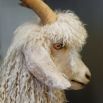 Gripper Loom at work: two loom beams of mohair each weighing 450-500 kg provide the warp and the pile of the three dimensional fabric which immediately after the weaving process is split into two - At the Steiff Schulte Weaving Mill, photo: Jan Hoehe
">
Gripper Loom at work: two loom beams of mohair each weighing 450-500 kg provide the warp and the pile of the three dimensional fabric which immediately after the weaving process is split into two - At the Steiff Schulte Weaving Mill, photo: Jan Hoehe
">
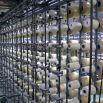 Loom beam. Up to 6000 threads are wound next to one another on this beam, and were they all tied together, the overall length would amount to 10. 2 million meters - photo: photo: Jan Hoehe
">
Loom beam. Up to 6000 threads are wound next to one another on this beam, and were they all tied together, the overall length would amount to 10. 2 million meters - photo: photo: Jan Hoehe
">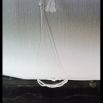 In the Dye-shop. Thousands of litres of water are needed to dye a 30-metre length of mohair and the processs takes about 4 hours
">
In the Dye-shop. Thousands of litres of water are needed to dye a 30-metre length of mohair and the processs takes about 4 hours
">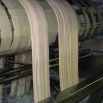 Paper Bear - Club-Edition 2010 - by Reinhard Schulte, based on the original paper bear for Margarete Steiff from from 1918/19 - photo: Jan Hoehe
">
Paper Bear - Club-Edition 2010 - by Reinhard Schulte, based on the original paper bear for Margarete Steiff from from 1918/19 - photo: Jan Hoehe
">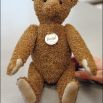
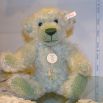 Uscha hugging a natural non fur brush fluff collector hose at the Steiff Schulte weaving mill - photo: Jan Hoehe
">
Uscha hugging a natural non fur brush fluff collector hose at the Steiff Schulte weaving mill - photo: Jan Hoehe
">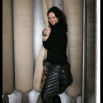 Eri Silkmoth - photo: Uscha Pohl
">
Eri Silkmoth - photo: Uscha Pohl
">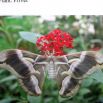 Eri Silkmoth, just emerged from its cocoon, with open wings it spans ca 12 cm - photo: Uscha Pohl
">
Eri Silkmoth, just emerged from its cocoon, with open wings it spans ca 12 cm - photo: Uscha Pohl
">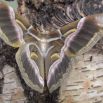
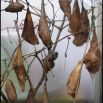 Wonder World Fur for WWF collection, Bamboseal vest with midnight blue-black Eri silk belt and interior, accessories, all designed by Boudicca - photo: Tomek Sierek, Model Bianca, hair Pshemko Sierek, make up Andrea Innocenti
">
Wonder World Fur for WWF collection, Bamboseal vest with midnight blue-black Eri silk belt and interior, accessories, all designed by Boudicca - photo: Tomek Sierek, Model Bianca, hair Pshemko Sierek, make up Andrea Innocenti
"> Wonder World Fur for WWF, grey Buffaloon scarf - photo: Tomek Sierek, Model Bianca, hair Pshemko Sierek, make up Andrea Innocenti
">
Wonder World Fur for WWF, grey Buffaloon scarf - photo: Tomek Sierek, Model Bianca, hair Pshemko Sierek, make up Andrea Innocenti
"> Wonder World Fur for WWF, Bamboseal headband - photo: Tomek Sierek, Model Bianca, hair Pshemko Sierek, make up Andrea Innocenti">
Wonder World Fur for WWF, Bamboseal headband - photo: Tomek Sierek, Model Bianca, hair Pshemko Sierek, make up Andrea Innocenti">

 Paul Steiff (left) and Reinhard Schulte (right) in 1908 - photo copyright Steiff Schulte
">
Paul Steiff (left) and Reinhard Schulte (right) in 1908 - photo copyright Steiff Schulte
"> Angora goat with its fleece of mohair - Mohair yarn is shorn off the back of Angora goats in order to be spun into Mohair yarn. Photo: photo: Jan Hoehe
">
Angora goat with its fleece of mohair - Mohair yarn is shorn off the back of Angora goats in order to be spun into Mohair yarn. Photo: photo: Jan Hoehe
"> Gripper Loom at work: two loom beams of mohair each weighing 450-500 kg provide the warp and the pile of the three dimensional fabric which immediately after the weaving process is split into two - At the Steiff Schulte Weaving Mill, photo: Jan Hoehe
">
Gripper Loom at work: two loom beams of mohair each weighing 450-500 kg provide the warp and the pile of the three dimensional fabric which immediately after the weaving process is split into two - At the Steiff Schulte Weaving Mill, photo: Jan Hoehe
">
 Loom beam. Up to 6000 threads are wound next to one another on this beam, and were they all tied together, the overall length would amount to 10. 2 million meters - photo: photo: Jan Hoehe
">
Loom beam. Up to 6000 threads are wound next to one another on this beam, and were they all tied together, the overall length would amount to 10. 2 million meters - photo: photo: Jan Hoehe
"> In the Dye-shop. Thousands of litres of water are needed to dye a 30-metre length of mohair and the processs takes about 4 hours
">
In the Dye-shop. Thousands of litres of water are needed to dye a 30-metre length of mohair and the processs takes about 4 hours
"> Paper Bear - Club-Edition 2010 - by Reinhard Schulte, based on the original paper bear for Margarete Steiff from from 1918/19 - photo: Jan Hoehe
">
Paper Bear - Club-Edition 2010 - by Reinhard Schulte, based on the original paper bear for Margarete Steiff from from 1918/19 - photo: Jan Hoehe
">
 Uscha hugging a natural non fur brush fluff collector hose at the Steiff Schulte weaving mill - photo: Jan Hoehe
">
Uscha hugging a natural non fur brush fluff collector hose at the Steiff Schulte weaving mill - photo: Jan Hoehe
"> Eri Silkmoth - photo: Uscha Pohl
">
Eri Silkmoth - photo: Uscha Pohl
"> Eri Silkmoth, just emerged from its cocoon, with open wings it spans ca 12 cm - photo: Uscha Pohl
">
Eri Silkmoth, just emerged from its cocoon, with open wings it spans ca 12 cm - photo: Uscha Pohl
">
 Wonder World Fur for WWF collection, Bamboseal vest with midnight blue-black Eri silk belt and interior, accessories, all designed by Boudicca - photo: Tomek Sierek, Model Bianca, hair Pshemko Sierek, make up Andrea Innocenti
">
Wonder World Fur for WWF collection, Bamboseal vest with midnight blue-black Eri silk belt and interior, accessories, all designed by Boudicca - photo: Tomek Sierek, Model Bianca, hair Pshemko Sierek, make up Andrea Innocenti
"> Wonder World Fur for WWF, grey Buffaloon scarf - photo: Tomek Sierek, Model Bianca, hair Pshemko Sierek, make up Andrea Innocenti
">
Wonder World Fur for WWF, grey Buffaloon scarf - photo: Tomek Sierek, Model Bianca, hair Pshemko Sierek, make up Andrea Innocenti
"> Wonder World Fur for WWF, Bamboseal headband - photo: Tomek Sierek, Model Bianca, hair Pshemko Sierek, make up Andrea Innocenti">
Wonder World Fur for WWF, Bamboseal headband - photo: Tomek Sierek, Model Bianca, hair Pshemko Sierek, make up Andrea Innocenti">











